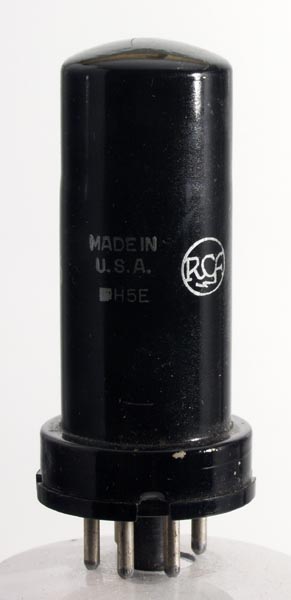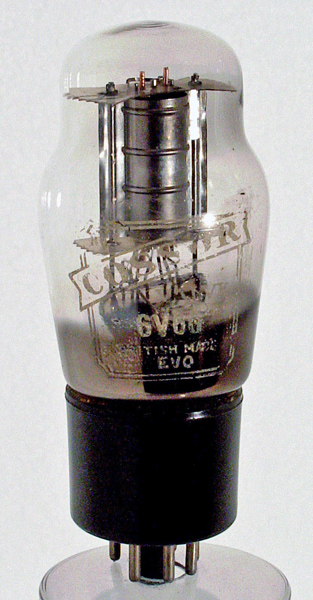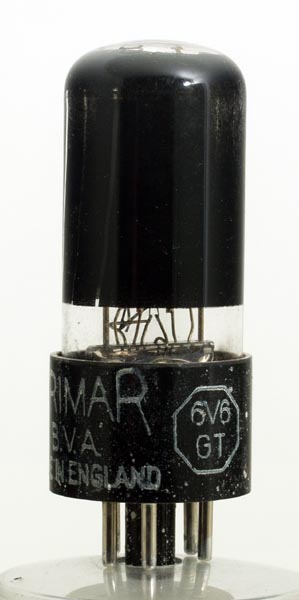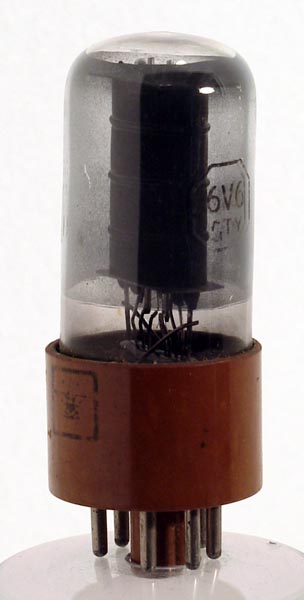The Meaning of the 'Y' Suffix on Octal Valves
The octal valves were originally introduced by RCA in America in 1935. The original 6V6 had a pressed glass foot and a metal envelope and has no suffix letters. For details of the first use of the glass disc construction see Metal Striptease. Multiple valves became possible but needed an insulated envelope. Glass envelopes with the classic shape were being used on other bases and the octal base also became host to the full sized glass envelope valves. The 6V6G shows this audio output valve produced with a pinch stem and large glass envelope.
Further development produced the Glass Tubular (GT) envelope. The ever popular 6V6 was also produced in this configuration. As the 6V6GT the overall size was reduced and a smaller pinch construction was employed. The plastic base itself was made of Bakelite in the same way as the full size glass envelope versions.
Bakelite was known to be lossy at radio frequencies and for high specification valves a ceramic base was used in place of Bakelite. As an example the 807 was used as both an RF power valve and as an audio amplifier valve, especially for AM modulators. For the audio modulator the 807 with a Bakelite base would be satisfactory, but for the RF power amplifier the 807 with the ceramic base would perform better.
For better AC loss performance than Bakelite, but at a lower cost than ceramic bases the wood-loaded phenolic resin base was developed. This had an improved AC performance and valves with this base had the suffix letter Y added. An example is the 6V6GTY
Thanks to Chris Parry for the information.
See also Ceramic or Moulded Base Caps.



